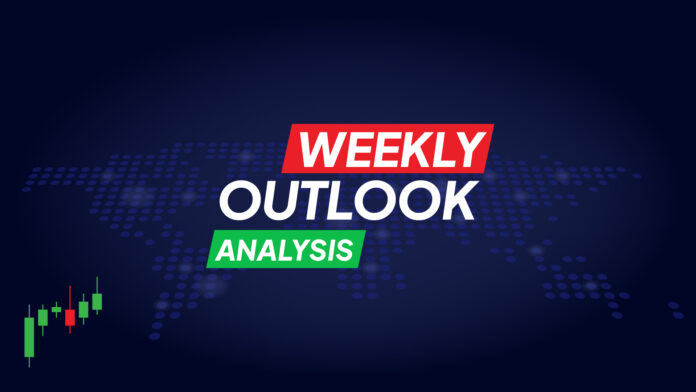Key points to watch out for:
- Fed rate cut forecasts hinge on US inflation data.
- Pound in focus after Bank of England’s dovish speech
- Can a strong labour market convince the Reserve Bank to raise rates?
- China: more data on tap ahead of slow start to second quarterAttention focuses on US CPI figures.
Attention focuses on US CPI figures
At its meeting a few weeks ago, the Fed was less hawkish than previously thought, with Chairman Powell ruling out further rate hikes and making it clear that they are not yet inclined to cut rates. The softer than expected April employment report confirmed this view, which was supported by more policymakers this week.
Only one official, Minneapolis Fed President Neel Kashkari, expressed a different view, saying that interest rates may have to remain at their current levels for the full year and that, while the bar for a rate hike is very high, it is not infinite.
Having said all this, traders will focus their attention this week on the US CPI for April, which will be released on Wednesday, May 15. According to the S&P Global PMIs, production values again increased at a solid but much slower pace in April than in March, indicating that risks around Wednesday’s figures could move in a bearish trend..
In addition, the year-on-year change in oil prices fell and approached zero, increasing downside risks to the policy rate.
Therefore, if the data indicates that the latest consumer price tightness was only temporary and inflation has started to cool again, traders may lower the implied path somewhat, which could have negative consequences for yields and the US dollar.
That said, market participants may get some context on April inflation developments when PPIs are released on Tuesday, May 14. US retail sales will also be released at the same time as the CPI figures and could likewise influence the market’s view of the Fed’s potential actions.
Will UK employment data influence a planned BoE rate cut in the summer?
The Bank of England (BoE) was more dovish than previously thought last week, leaving interest rates unchanged, although two members voted for a near 25 basis point cut. The statement also mentioned that it will consider data released according to its calendar schedule and how this will influence the assessment of possibly declining inflation risks.
Combined with the downward revisions to inflation estimates, this observation indicates that officials believe inflation will likely continue to soften. The pound fell slightly on the news, as investors were convinced that the first 25 basis-point cut would occur in August.
On Tuesday, May 14, the UK will release employment data for March. Investors may pay particular attention to wage growth to see if it continues to soften—a factor that could allow inflation to slow, as the Bank has estimated. Consequently, should wages slow, the pound could extend its BoE-linked decline, as traders might consider whether a June cut is the ideal option.
The dollar may take advantage of rising RBA bullish expectations
After the disappointment of the RBA’s determination to remain neutral, Australian market traders will now turn their attention to Australia’s wage price index on Wednesday, May 15, along with the country’s employment report on Thursday, May 16.
Given that first-quarter inflation was much stronger than expected, rate cuts by the Australian central bank are no longer anticipated.
Although the Bank reaffirmed that it is not ruling anything out in this week’s decision, further acceleration in wages—trending higher since the third quarter of 2020—and a strong rebound in employment could increase the likelihood of a September hike. This comes at a time when central banks are evaluating the ideal timing to start lowering rates. This could be positive for the Australian dollar, which might also benefit from a greater risk appetite if Wednesday’s US inflation data encourages investors to increase their bets on a Fed rate cut.
How did China’s economy start Q2?
Turning to the Australian dollar and broader market sentiment, another variable this week is China. On Friday, May 17, Asia’s largest economy will release data on industrial production, retail sales, and fixed asset investment for April.
China’s official PMIs indicated that growth slowed in both the manufacturing and services sectors, signaling that activity cooled at the start of the second quarter after considerable gains in March. However, China’s exports and imports rose in April after having contracted in March, signaling improvement both domestically and internationally.
That said, although solid GDP growth in the first quarter reduced the urgency for Chinese policymakers to implement new stimulus measures, if this week’s data suggest a slow start to the second quarter, it could reignite concerns about the stability of the economy’s recovery. This could weigh on both the Australian and New Zealand dollars, with the former losing some of its employment-linked gains.
Japanese GDP back in the spotlight
On Thursday, May 16, Japan will release its first GDP forecast for Q1. It will be interesting to see if the economy maintains its growth or reenters contraction. In the latter case, the yen is likely to fall further and approach the 160 to the dollar zone that prompted the first round of intervention a few weeks ago.
However, even if the Japanese authorities intervene again near that level, a turnaround remains unlikely. Another quarter of contraction would likely delay the Bank of Japan’s next rate hike. For the yen to recover, GDP data must reflect positive economic trends that could prompt accelerated stimulus measures, encouraging traders to anticipate rate hikes this summer.



